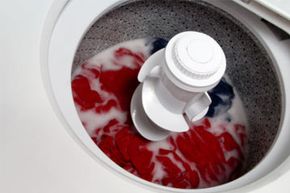Fiberglass has a reputation, not unlike asbestos, as a material that's used in the construction of buildings and products even though it may be harmful to humans. As the name suggests, fiberglass is made up of fibers of glass. It's used as an insulating material and for strengthening plastics, so you might find it anywhere from roofing, furnace filters and plumbing materials, to fishing rods and surfboards.
Unlike asbestos, though, fiberglass is man-made, and it hasn't been definitively linked to diseases such as cancer. It is similar, however, because it has the same strands, or fibers, it holds up well as a composite material, and it is an irritant. If you've ever worked with it, you know what we mean. These thin, sharp fibers can get embedded into the skin, causing contact dermatitis, and when a material made from fiberglass is broken down or cut, the released particles carry fine glass dust that can have an effect on breathing. Membranes in the throat, nose and eyes also are susceptible to these particles.
Advertisement
But what about when these particles get attached to your clothes? Do people who work with fiberglass day in and day out just toss their work clothes, or is there a way to make them wearable again?



